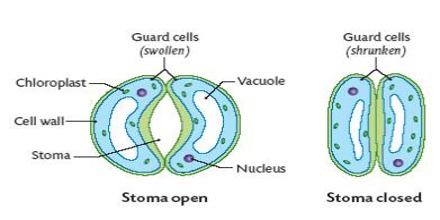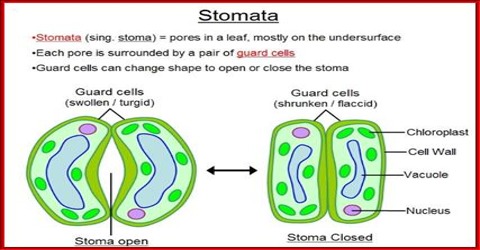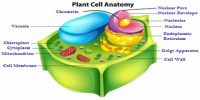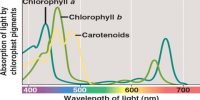In presence of sufficient light and optimum cell temperature stomata open and in the dark close. Thus, stomatal transpiration occurs in the day time and not in the night time. Special cells called guard cells control each pore’s opening or closing. When stomata are open, transpiration rates increase; when they are closed, transpiration rates decrease.
Causes: The following reactions are taken place in the guard cells, during day and night time.
Starch + ip → Phosphorylase→ Glucose-I Phosphate.

During the day time in presence of sunlight the PH of cell sap of guard cells increases up to PH and the enzyme Phosphorylase present in chloroplasts hydrolyses starch to glucose-I phosphate I (osmotically active). As the cell sap becornes osmotically active it absorbs water from the surrounding cells to become turgid and therefore the stomata open.
During the night time, in absence of light the PH of the cell sap of the guard cells decreases up to PH and the enzyme Phosphorylase converts glucose-I-phosphate to starch. As the cell sap of the guard calls becomes osmotically inactive, water withdrawn from it by the surrounding cells and the guard cells, lose their turgidity and become flaccid and the stomata close.













